
Jie Han

Jie Han
I am the Principal Investigator (PI) of the Environmental and Public Health Group and a Professor with a 'Young Talent Tier A' appointment at Xi'an Jiaotong University (XJTU), member of the 'C9 league' universities in China, which is ranked among the top 10 in science and engineering in the country.
The overall theme of my research is on environment and public health, and much of my previous work was on emerging contaminants, particularly the migration of trace organic compounds into and out of polymers including membranes, common plastics, and elastomers. I have strong interests in advancing public health including exposure identification, risk assessment, mitigation, and science communication to the general public.
Prior to joining XJTU, I received research training and experience from the University of Auckland (UoA), National University of Singapore (NUS), University of Illinois at Urbana Champaign (UIUC), and University of Massachusetts Amherst (UMass Amherst), and worked with the PIs of several world-renowned laboratories in my fields. Since my Auckland times, I have supervised over 50 students, including undergraduates and Master's students who later developed strong interests in scientific research and pursued their PhDs. In the past six years, I have delivered over a dozen research projects as the PI or co-PI, and received over eight million RMB in research funding.
I have a strong passion in scientific writing, editing, and communication. I hold appointments as the Co-Editor-in-Chief of Environmental Chemistry Letters (Springer Nature, JCR Q1, IF 15.0) and I am a member of the Editorial Board of Chemical Engineering Journal (JCR Q1, IF 13.3), Ecotoxicology and Environmental Safety (JCR Q1, IF 6.8), and Animal Diseases (a new journal launched in spring 2021, indexed by ESCI). I serve as a member of the Council of Science Editors (U.S.) and the China Editology Society of Science Periodicals. I am a Senior Member of the Chinese Society for Enviornmental Sciences and hold long-term memberships of the International Water Association (IWA) and the American Chemical Society (ACS).
To our fellow researchers, students, and prospective collaborators:
I have always been working on emerging contaminants since the beginning of my PhD, and this virus, out of all the things I know, is the most dangerous ‘emerging contaminant’ threatening public health. I couldn't help but often staring at the rolling numbers and statistics thinking how many people are dying from this disease every day, every hour, and every moment, somewhere in this world. And we don't even know where it came from and how it got to this far.
I was born in the 80s, and have been through the 1998 flood, 2003 SARS, the Christchurch earthquake, etc. This is nothing like what I have seen.
Since the beginning of my research career, I have been an experimental scientist. Every single project I did was an experimental study. I believe in science, and even more so in data. But now, I have a strong will to contribute, through commentaries, critical reviews, data analyses, new ideas, to voice our concerns and share our thoughts that could be useful to others in this pandemic. To me, the goal of saving lives through research has never been so real, and so urgent. If this doesn't motivate us, I don't know what will.
Medical researchers are racing against time, and so are we. The rolling numbers and daily mortality counts make us think that getting our best work out in a timely fashion is the most important thing for us to contribute on COVID-19. We have a dedicated 10-person team led by myself working day and night to ensure timely delivery and the scientific rigor of our work.
Viruses and pandemics are an essential part of the evolution process. Being the most intelligent species living on this planet, we humans have enjoyed far too many privileges by exploiting natural resources and other living species on this planet, for far too long. There is a time we must stop and think about how we could do better, live better, and get along better with other species living on earth, our only home. For now, there is nothing as urgent as understanding the origin, infection, and transmission of this virus in our communities, and for that we must stand together, research, and communicate using science as our most powerful tool to protect more people from dying from this pandemic.
We invite you to come back for further updates on our work. We update this page every 1-2 weeks to ensure the latest information is published here.
- Jie Han, at Xi'an Jiaotong University (2020.07.22)
***
(Update on August 4, 2021)
The WHO's global statistics on new weekly infections show a 'third-wave' is looming. Reemergent outbreaks caused by the spread of SARS-CoV-2 Delta variant (B.1.617.2) is becoming the new reality for citizens and public health authorities. In a report issued to the British government on 30 July 2021, the Scientific Advisory Group for Emergencies (UK) warned that due to the massive number of infections, it is unlikely to achieve total eradication of COVID-19 and with the virus constantly mutating and evolving, a new variant would inevitably appear and render all current vaccines ineffective – a dire scenario that must be prepared for and dealt with at all costs.
It’s been just over a year since we started working on this imperative. Many of our hypotheses are now proven by new evidence and case reports. To save readers’ time, below is a short list of ‘important work’ which we have completed in the past twelve months. Some of them already garnered significant numbers of reads and citations. Others have not been noticed by many. We feel it is important to bring them to the wider attention by the research community and public authorities.
Please scroll down to find more details, including visual abstracts and latest updates. We have a few more articles to add to this list. We will post them here once they are completed.
- Jie Han, at Xi’an Jiaotong University
***
(List updated on January 4, 2023)
Part 1
Biorepositories (biobanks) of human body fluids and materials as archives for tracing early infections of COVID-19 (Submitted 3 October 2020; Published 18 January 2021) Link
A dreadful loop: Can reverse zoonosis of COVID-19 seed unrestrained spread and mutations in wild species and transmission of novel strains to humans? (Date Written: 27 October 2020) Link
The singing cicadas at 10 p.m.: Urban night, wild habitants, and COVID-19 (Date Written: 3 May 2021) Link
Part 2
Need for assessing the inhalation of micro(nano)plastic debris shed from masks, respirators, and home-made face coverings during the COVID-19 pandemic (Published 6 October 2020; Submitted 25 July 2020) Link
Mask on beauty: Mask, respirator, and cloth face covering wearers at risks of inhaling abundant respirable hazards from leave-on facial cosmetics (Date Written: 2 May 2021) Link
Expired and unwanted pharmaceuticals: The hidden environmental legacy of COVID-19 (Date Written: 1 February 2022) Link
Biocide-tolerance and antibiotic-resistance in community environments and risk of direct transfers to humans: Unintended consequences of community-wide surface disinfecting during COVID-19? (Published 3 April 2021; Submitted 7 December 2020) Link
Part 3
Urban flooding events could pose risks of virus spread and community outbreaks during the coronavirus (COVID-19) pandemic (Published 23 September 2020; Submitted 30 June 2020) *ESI Highly CIted Paper Link
Can the coronavirus disease be transmitted from food? A review of evidence, risks, policies and knowledge gaps (Published 1 October 2020; Submitted 3 September 2020) *ESI Highly CIted Paper Link
It is time to acknowledge coronavirus transmission via frozen and chilled foods: Undeniable evidence from China and lessons for the world (Available online 5 January 2023;Accepted 1 January 2023; Submitted 12 August 2022) Link
The last inches: Human thermal plume as an overlooked factor in airborne transmission of COVID-19 in the human microenvironment (Date Written: 18 December 2020) Link
Our current research covers the following domains:
(1) Tracing early infections and origins of novel pathogens
(环境与早期感染溯源)
(2) Environmental transmission, vectors, and prevention
(环境传播途径、传播介质与阻断)
(3) Human behavioral changes, environmental impact, and public health risks
(人群行为变化及导致的环境效应与公众健康风险)
(4) Smarter cures, surveillance tools, disinfection methods, and preventive strategies for infectious dieases
(更有效的治疗、监测、消毒与预防策略,应对长期新冠或其它流行病)
(5) Decision-making and public health policies
(决策与公共卫生政策制定)
We seek students, postdocs, visiting students or scholars, and collaborators from microbiology, biology, epidemiology, medical science, and public health related disciplines to conduct further work in these emerging research domains.
Topic (1) Tracing early infections and origins of COVID-19
主题 (1) 环境与早期感染溯源
何珊珊 等. 利用“生物银行”中存档的人体体液与组织样本追溯早期新冠感染人员
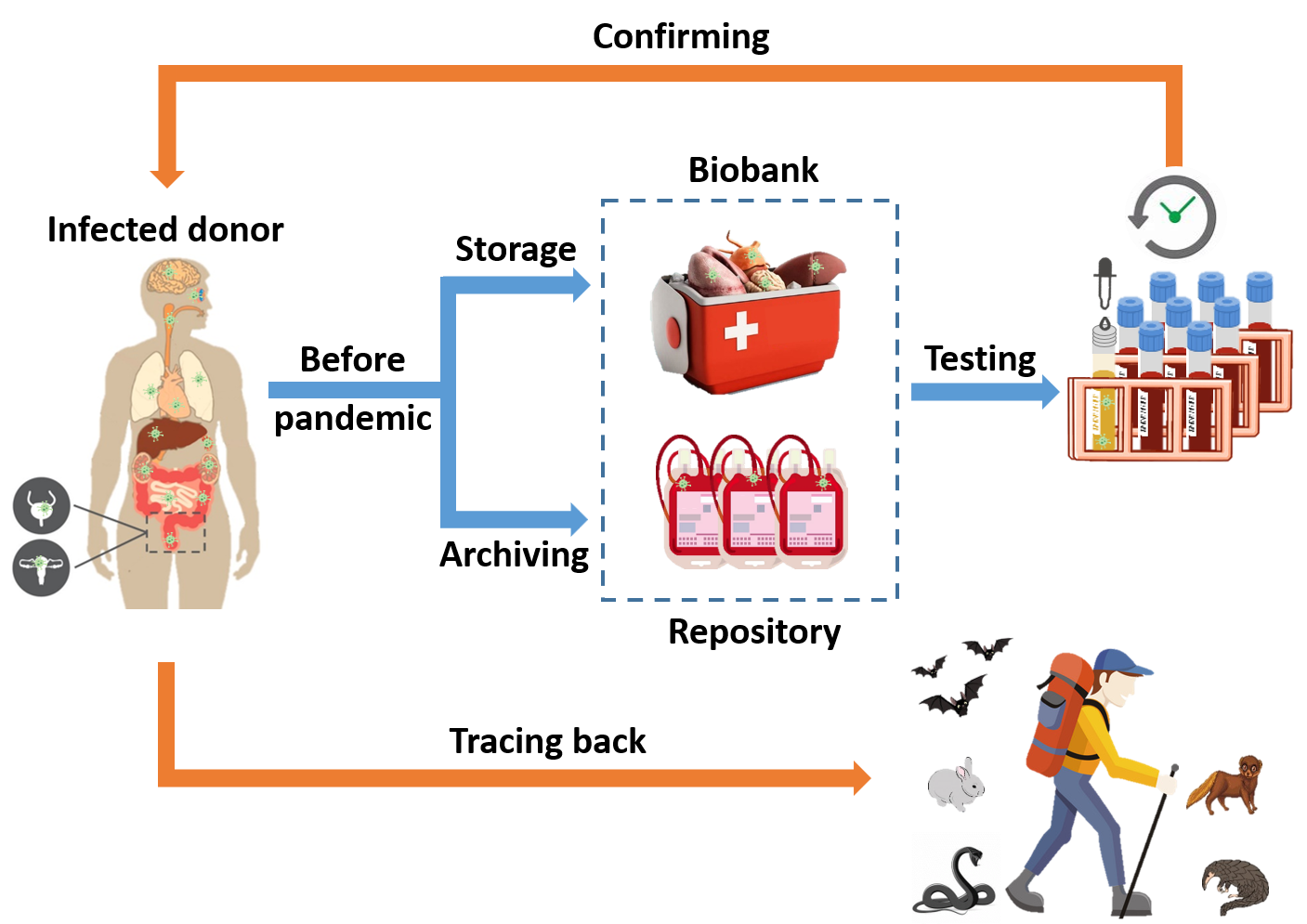
(Preprint version) Biorepositories (biobanks) of human body fluids and materials as archives for tracing early infections of COVID-19. Available at SSRN. http://dx.doi.org/10.2139/ssrn.3722520 (Date Written: 3 October 2020) PDF download
(Published version) Biorepositories (biobanks) of human body fluids and materials as archives for tracing early infections of COVID-19. Environmental Pollution. https://www.sciencedirect.com/science/article/pii/S0269749121001032 (Submitted 3 October 2020; Published 18 January 2021) (JCR Q1, IF 8.9)
Top Ten papers on SSRN (60 days):
https://papers.ssrn.com/sol3/topten/topTenResults.cfm?groupingId=3068981&netorjrnl=jrnl (Civil & Environmental Engineering)
https://papers.ssrn.com/sol3/topten/topTenResults.cfm?groupingId=3069038&netorjrnl=jrnl (Health & Safety)
https://papers.ssrn.com/sol3/topten/topTenResults.cfm?groupingId=3068922&netorjrnl=jrnl (Bioengineering)
何珊珊 等. 夜间蝉鸣:城市夜晚光噪污染、栖息的野生物种与新冠

(Preprint version) The singing cicadas at 10 p.m.: Urban night, wild habitants, and COVID-19. Available from SSRN. http://dx.doi.org/10.2139/ssrn.3838871 (Date Written: 3 May 2021; Last Revised: 4 May 2021) PDF download
(Published version) Have artificial lighting and noise pollution caused zoonosis and the COVID-19 pandemic? Environmental Chemistry Letters. https://doi.org/10.1007/s10311-021-01291-y (Submitted 11 May 2021; Published 31 July 2021) (JCR Q1, IF 15.7)
Authors' note: Where did SARS-CoV-2 come from? Did it spread to the 'Patient Zero' through proactive human-animal contact (wildlife trades, hunting, bushmeat consumption, etc.)? Why did humans witness an increasing number of zoonotic diseases in the past few decades? Our article proposes a new hypothesis that differs from the "market hypothesis" in current literature.
作者注:新冠病毒从哪里来?最初是否通过人与动物的主动接触(如野生动物交易、打猎、食野味等方式)传播至人类?为何过去几十年里人畜共患病(zoonotic diseases)的爆发频次显著增加?本文提出了一个有别于当前文献中观点 ("market hypothesis")的新的假设。
何珊珊 等. 新冠大流行中人对动物的反向病毒输入,可能引发
病毒在野生物种中的无控传播与变异加速,导致新型毒株溢出至人类和疫苗有效性降低
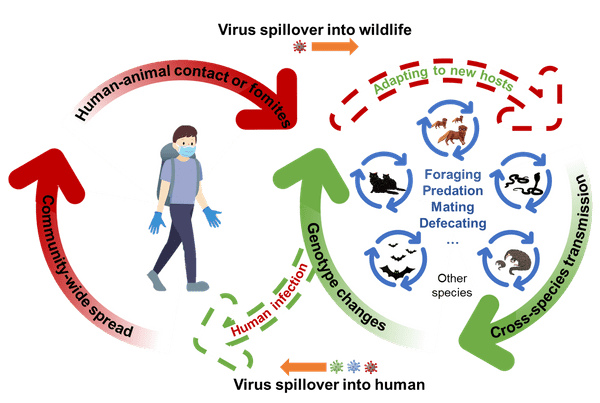
(Preprint version) A dreadful loop: Can reverse zoonosis of COVID-19 seed unrestrained spread and mutations in wild species and transmission of novel strains to humans? Available at SSRN. http://dx.doi.org/10.2139/ssrn.3721791 (Date Written: 27 October 2020) PDF download
(Published version) Backward transmission of COVID-19 from humans to animals may propagate reinfections and induce vaccine failure. Environmental Chemistry Letters. https://doi.org/10.1007/s10311-020-01140-4 (Accepted 4 November 2020; Published 3 January 2021). (JCR Q1, IF 15.7)
Top Ten papers on SSRN (60 days):
https://papers.ssrn.com/sol3/topten/topTenResults.cfm?groupingId=3068981&netorjrnl=jrnl (Civil & Environmental Engineering)
https://papers.ssrn.com/sol3/topten/topTenResults.cfm?groupingId=3069038&netorjrnl=jrnl (Health & Safety)
https://papers.ssrn.com/sol3/topten/topTenResults.cfm?groupingId=3217680&netorjrnl=ntwk (Ecology)
【环境人Environmentor】公众号2020年11月6日 推送:西交大韩杰团队ECL: 大流行中人对动物的反向输入可能引发新冠病毒在野生物种中无控传播、变异与新型毒株溢出 原文链接:https://mp.weixin.qq.com/s/nwHfNLHKMDKzpXwXsJlvpg
2020年12月19日:论文预印本被Europe PubMed Central收录 https://europepmc.org/article/PPR/PPR241810
2021年8月2日更新:《Nature》发表评论文章(https://www.nature.com/articles/d41586-021-02110-8),对美国农业部(USDA)研究人员最近bioRivx预印本论文中报道的北美白尾鹿出现大面积新冠感染表示关注。该研究发现,美国东北部三分之一的白尾鹿(Odocoileus virginianus)体内都出现了抗 SARS-CoV-2 的抗体,这表明它们已经感染了新冠病毒。这也是首次在野生动物种群中观察到广泛接触该病毒暴露的情况。bioRxiv 预印本: https://www.biorxiv.org/content/10.1101/2021.07.29.454326v1 这些最新证据和观点印证了我们在以上论文中提出的假设和风险警示。
Update (August 2, 2021): "Researchers are concerned about the emergence of new animal ‘reservoirs’ — animal populations that harbour SARS-CoV-2. A pool of infected animals could provide a refuge where the virus could evolve in ways that threaten vaccine efficacy. A reservoir could also allow the virus to spread to other species and back to people, even after the pandemic subsides." (Nature , August 2, 2021, https://www.nature.com/articles/d41586-021-02110-8)
Update (Nov 10, 2021): "How SARS-CoV-2 in American deer could alter the course of the global pandemic" https://www.npr.org/sections/goatsandsoda/2021/11/10/1054224204/how-sars-cov-2-in-american-deer-could-alter-the-course-of-the-global-pandemic
"Pennsylvania State University have found active SARS-CoV-2 infections in at least 30% of deer tested across Iowa during 2020. Their study, published online last week (https://www.biorxiv.org/content/10.1101/2021.10.31.466677v1), suggests that white-tailed deer could become what's known as a reservoir for SARS-CoV-2. That is, the animals could carry the virus indefinitely and spread it back to humans periodically.
If that's the case, it would essentially dash any hopes of eliminating or eradicating the virus in the U.S. — and therefore from the world — says veterinary virologist Suresh Kuchipudi at Penn State, who co-led the study.
"If the virus has opportunities to find an alternate host besides humans, which we would call a reservoir, that will create a safe haven where the virus can continue to circulate even if the entire human population becomes immune," he says. "And so it becomes more and more complicated to manage or even eradicate the virus."
Another concern, Saif says, is that SARS-CoV-2 could evolve inside the deer and create new strains of the virus. Researchers have already documented such a scenario with minks on farms in the Netherlands and Poland, she points out."
Topic (2) Environmental transmission, vectors, and mitigation
主题 (2) 环境传播途径、传播介质与预防
代寒 唐昊 等. 低温冷链货物远距离传播冠状病毒:无可否认的证据与中国经验
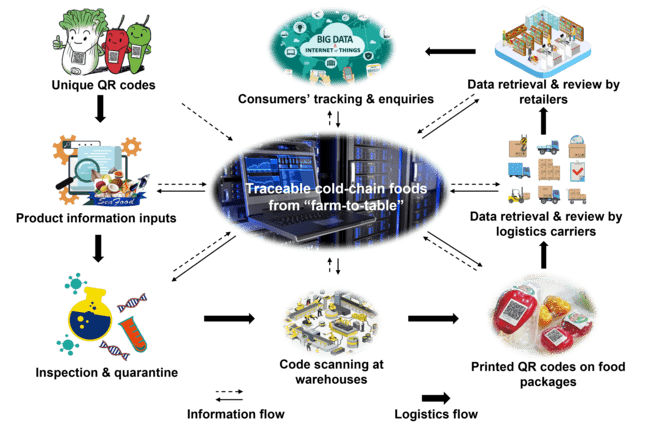
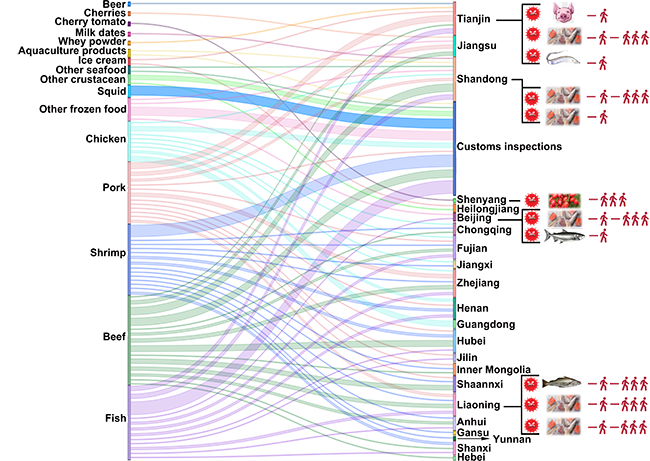
It is time to acknowledge coronavirus transmission via frozen and chilled foods: Undeniable evidence from China and lessons for the world. Science of the Total Environment. https://doi.org/10.1016/j.scitotenv.2023.161388 (Published 5 January 2023; Accepted 1 January 2023; Submitted 12 August 2022) (JCR Q1, IF 9.8)
韩杰 张雪 等. 新冠病毒的食品传播:证据、风险、当前的政策与认知缺口
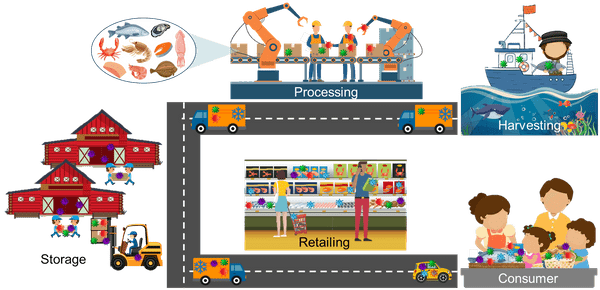

Can the coronavirus disease be transmitted from food? A review of evidence, risks, policies and knowledge gaps. Environmental Chemistry Letters. https://doi.org/10.1007/s10311-020-01101-x (Published 1 October 2020; Submitted 3 September 2020) (JCR Q1, IF 15.7) *ESI Highly CIted Paper
【环境人Environmentor】公众号 2020年10月19日 推送:西交大韩杰团队ECL | 新冠病毒的食品传播:证据、风险、当前的政策与认知缺口 原文链接:https://mp.weixin.qq.com/s/1io6bkodSeOAscWdsOaU5A
Science 于2021年1月8日发表的题为"SARS-CoV-2 spillover events"的观点论文(Perspective),作者Peng Zhou与武汉病毒所石正丽 。论文中3处引用并用较大篇幅讨论了本文中的内容。Science论文链接: https://science.sciencemag.org/content/sci/371/6525/120.full.pdf
根据施普林格(Springer)出版社统计:自2020年10月1日在线发表以来,该论文在Web of Science 核心数据库论文中被引用113次,论文访问量超过20000次,17家新闻媒体报道,730次社交媒体转载、2个维基百科页面引用。https://link.springer.com/article/10.1007/s10311-020-01101-x/metrics

韩杰 等. 疫情期间的城市洪灾导致新冠病毒传播与社区爆发的风险

Urban flooding events could pose risks of virus spread and community outbreaks during the coronavirus (COVID-19) pandemic. Science of the Total Environment. https://doi.org/10.1016/j.scitotenv.2020.142491 (Published 23 September 2020; Submitted 30 June 2020) (JCR Q1, IF 9.8) *ESI Highly CIted Paper
Update: As of January/February 2021, this highly cited paper received enough citations to place it in the top 1% of the academic field of Environment/Ecology based on a highly cited threshold for the field and publication year. Data from Essential Science Indicators.
【更新】论文于2021年1月/2月入选科睿唯安(Clarivate)Essential Science Indicators(ESI)高被引论文。
顾兆林老师、曹军骥老师、Eric Lichtfouse教授、韩杰等12名学者联合署名发表评论.
关于新冠病毒空气传播:至今仍未回答的问题
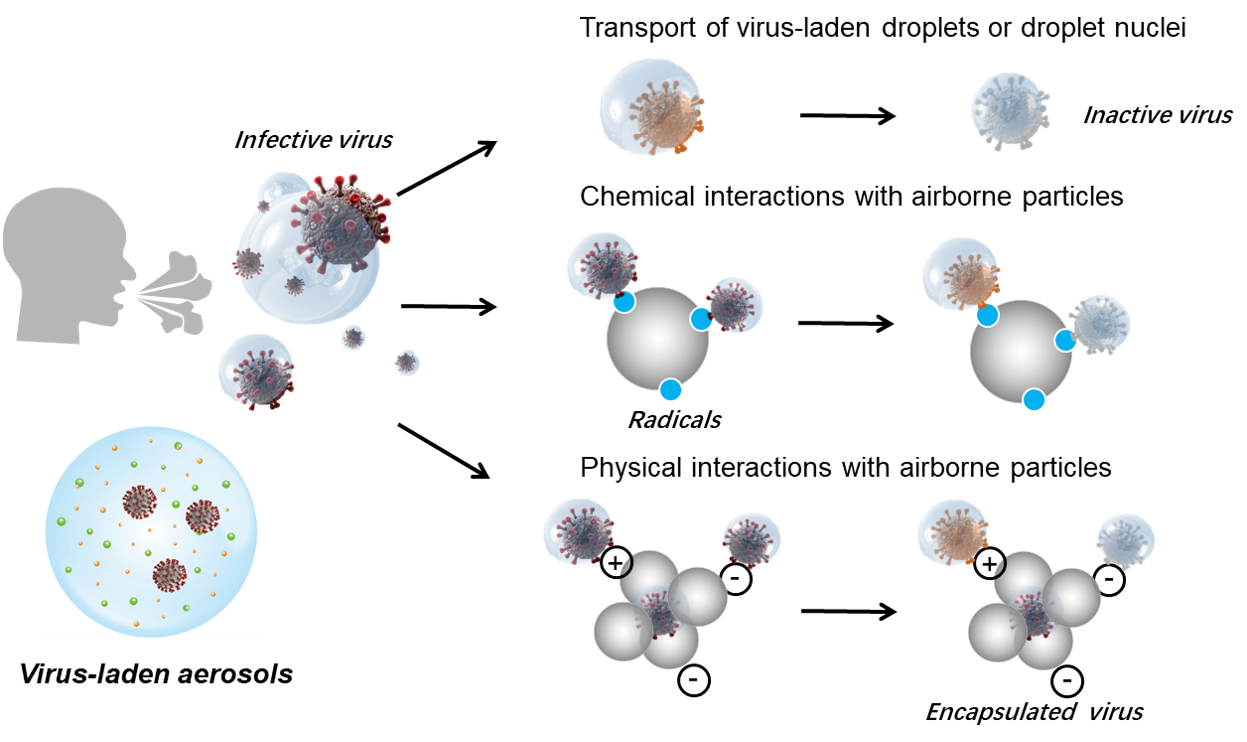
Unanswered questions on the airborne transmission of COVID-19. Environmental Chemistry Letters. https://doi.org/10.1007/s10311-022-01557-z (Published 6 January 2023; Submitted 16 June 2022) (JCR Q1, IF 15.7)
孙世翼 等. 人体微环境中的热羽流:新冠病毒空气传播过程中的最后几英寸距离
![]()
(Preprint version) The last inches: Human thermal plume as an overlooked factor in airborne transmission of COVID-19 in the human microenvironment. Available at SSRN. http://dx.doi.org/10.2139/ssrn.3754655 (Date Written: December 8, 2020) PDF download
(Published version) How human thermal plume influences near-human transport of respiratory droplets and airborne particles: a review. Environmental Chemistry Letters. https://doi.org/10.1007/s10311-020-01178-4 (Submitted 18 December 2020; Published 21 January 2021) (JCR Q1, IF 15.7)
Top Ten papers on SSRN (60 days):
https://papers.ssrn.com/sol3/topten/topTenResults.cfm?groupingId=2929918&netorjrnl=jrnl (Transmission)
https://papers.ssrn.com/sol3/topten/topTenResults.cfm?groupingId=3385241&netorjrnl=ntwk (Nursing)
陈博 等. 新冠病毒传播的隐形媒介:室内气溶胶的常见来源、特征及影响
![]()
(Preprint version) Invisible agents of COVID-19 transmission? Common sources, characteristics, and implications of indoor aerosols. Available at SSRN. http://dx.doi.org/10.2139/ssrn.3752556 (Date Written: December 21, 2020) PDF download
(Published version) Role of indoor aerosols for COVID-19 viral transmission: A review. Environmental Chemistry Letters. https://doi.org/10.1007/s10311-020-01174-8 (Submitted 18 December 2020; Published 13 January 2021) (JCR Q1, IF 15.7) *ESI Highly CIted Paper
【更新】该论文于2022年1月入选科睿唯安(Clarivate)Essential Science Indicators(ESI)高被引论文。
孙世翼 等. 露天排便和蹲厕:发展中社区中被忽视的新冠及其它粪源病原体的传播风险
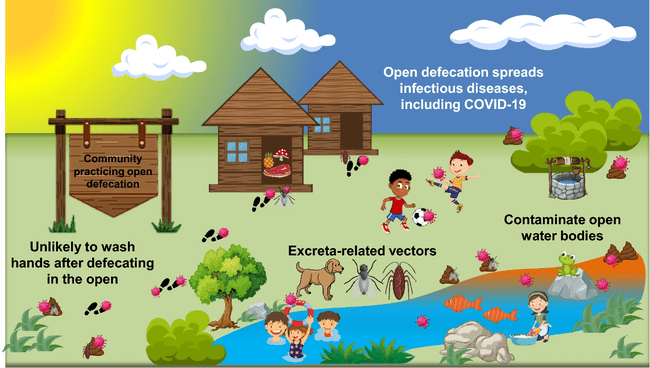
Open defecation and squat toilets, an overlooked risk of fecal transmission of COVID-19 and other pathogens in developing communities. Environmental Chemistry Letters. https://doi.org/10.1007/s10311-020-01143-1 (Accepted 17 November 2020; Submitted 4 November 2020) (JCR Q1, IF 15.7)
韩杰 等. 新冠大流行下市政固废成为病毒及其它病原体的潜在传播媒介
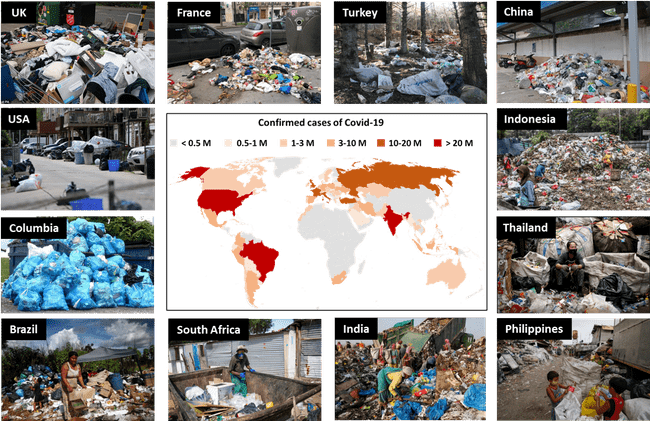
(Preprint version) Municipal Solid Wastes: An Under-Investigated Route of Transmission for SARS-CoV-2 and Other Pathogens in the Covid-19 Pandemic. Available at SSRN. http://dx.doi.org/10.2139/ssrn.4032165 (Date Written: 30 January 2022) PDF download
(Published version) Municipal solid waste, an overlooked route of transmission for the severe acute respiratory syndrome coronavirus 2: a review Environmental Chemistry Letters. https://doi.org/10.1007/s10311-022-01512-y (Submitted 2 July 2022; Published 15 September 2022) (JCR Q1, IF 15.7)
【作者注】Food wastes, personal care products (e.g., toothbrushes, first aids, feminine hygiene products), disposable products (e.g., tissues, wipes, face masks, and plastic utensils), and other personal items (e.g., napkins, razor blades, pillows) from infected households are easily contaminated with human biological matter which may carry infectious agents. The management of MSWs involves complex logistics with a range of facilities and personnel, from the collection, bulk transport, handling to treatment or disposal that often require manual operation with risks of inhalation of virus-laden aerosols or contact with virus-contaminated surfaces or objects. Unrestrained access to waste bins in public settings and open landfill sites can expose individuals (e.g., waste pickers, custodial staff, and machinery operators) and mechanical vectors (e.g., animals and insects) to SARS-CoV-2 and other infectious agents carried on MSWs. Unsanitary practices of MSW handling and disposal during COVID-19 such as fly-tipping, waste picking, and unprotected workers with informal employment can exacerbate the risks of MSW-mediated transmission of SARS-CoV-2 and other pathogens among both workers and residents near or at downwind loations of waste collection and disposal sites.
韩杰 等. 纤维枕作为新冠病毒和其它呼吸道病原体的富集与传播介质
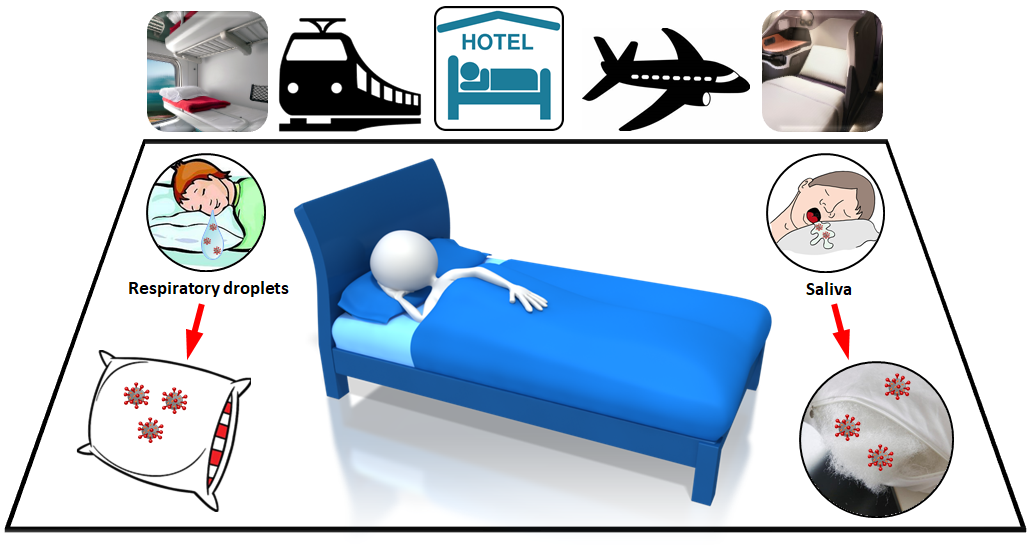
Microfiber pillow as a potential harbor and environmental medium transmitting respiratory pathogens during the COVID-19 pandemic. Ecotoxicology and Environmental Safety. https://doi.org/10.1016/j.ecoenv.2020.111177 (Published 18 August 2020; Submitted 26 June 2020) (JCR Q1, IF 6.8)
报道: Lakshmi Supriya. Microfiber pillows could harbor SARS-CoV-2 particles (Sep 16, 2020) https://www.news-medical.net/news/20200916/Microfiber-pillows-could-harbor-SARS-CoV-2-particles.aspx
王雪 等. 疫情下的公共设施内哺乳:母亲与未受保护婴儿的暴露风险

Breastfeeding in public amenities during the COVID-19 pandemic: Mothers and unprotected infants. Environmental Chemistry Letters. https://doi.org/10.1007/s10311-020-01054-1 (Published 21 July 2020) (JCR Q1, IF 15.7)
何珊珊 等. 激光打印机排放的静电细颗粒作为新冠病毒空气传播的潜在介质
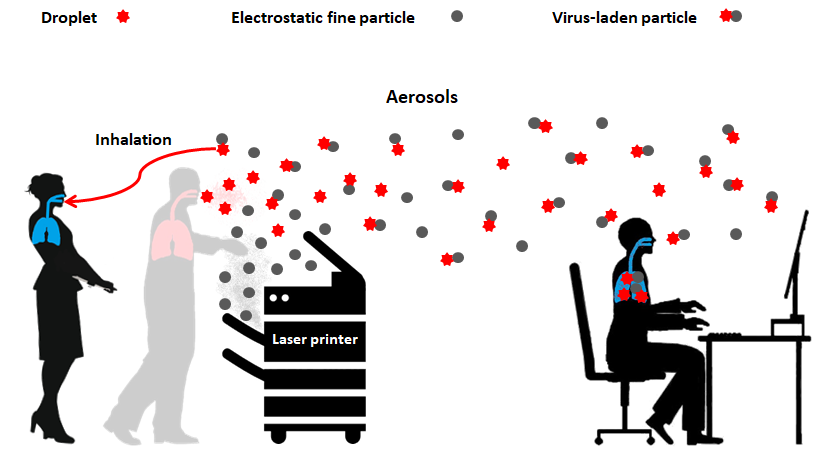
Electrostatic fine particles emitted from laser printers as potential vectors for airborne transmission of COVID-19. Environmental Chemistry Letters. https://doi.org/10.1007/s10311-020-01069-8 (Published 7 August 2020; Submitted 21 July 2020) (JCR Q1, IF 15.7)
Topic (3) Human behavior changes, environmental impact, and associated health risks
主题 (3) 人群行为变化及导致的环境效应与公众健康风险
代寒 等. 口罩之下: 口罩与布面罩佩戴者存在吸入大量面部化妆品成分的风险
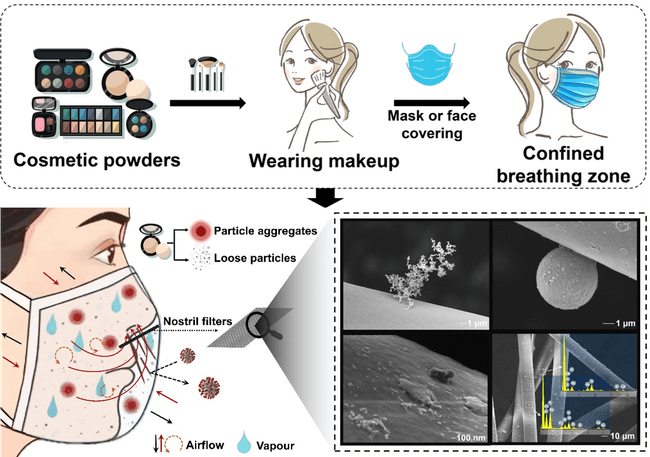
(Preprint version) Mask on beauty: Mask, respirator, and cloth face covering wearers at risks of inhaling abundant respirable hazards from leave-on facial cosmetics. Available from SSRN. https://dx.doi.org/10.2139/ssrn.3865482 (Date Written: 2 May 2021)
韩杰 等. 需研究疫情下人们从口罩与自制面罩中吸入微纳塑料颗粒的风险
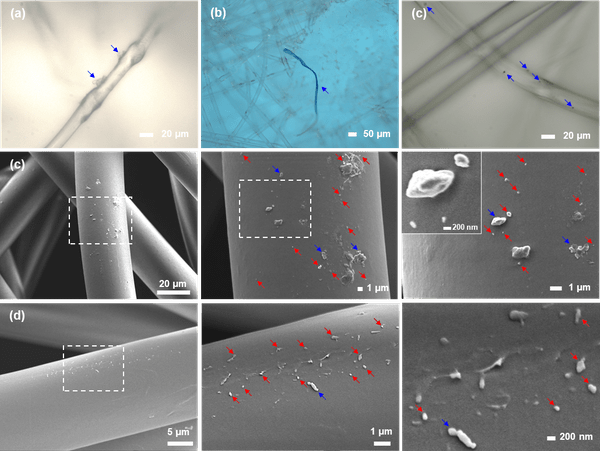
(Preprint version) Need for Assessing the Inhalation of Micro(nano)plastic Debris Shed from Masks, Respirators, and Home-Made Face Coverings During the COVID-19 Pandemic. Available at ChemRxiv. https://doi.org/10.26434/chemrxiv.12751718.v1 (Date Written: 2 August 2020) PDF download
(Published version) Need for assessing the inhalation of micro(nano)plastic debris shed from masks, respirators, and home-made face coverings during the COVID-19 pandemic. Environmental Pollution. https://doi.org/10.1016/j.envpol.2020.115728 (Published 6 October 2020; Submitted 25 July 2020) (JCR Q1, IF 8.9)
作者注:美国化学会(ACS)论文预印本平台ChemRxiv统计:自2020年8月2日,论文上传至ChemAxiv预印本平台以来,该论文总访问量达到10031次,下载820次。
https://chemrxiv.org/engage/chemrxiv/article-details/60c74e910f50db810e397279
Altmetric网站显示:论文发表后引发广泛关注,3家国外新闻媒体报道、1500余次国外社交媒体转发;Altmetric分数1070,位列全球研究论文前5%:https://www.altmetric.com/details/92370493
韩杰 等. 家庭过期药物:新冠大流行留下的隐形环境遗产
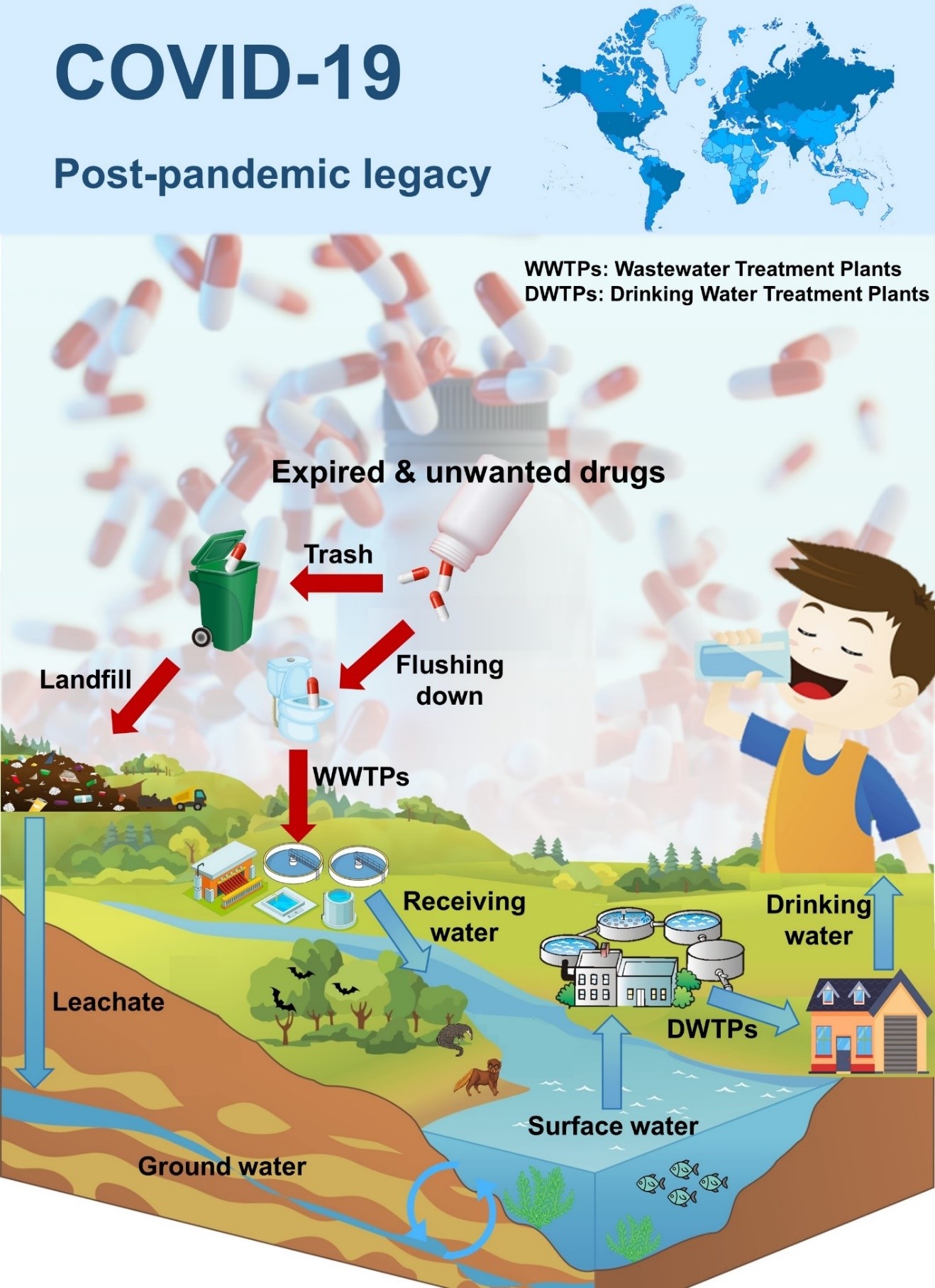
(Preprint version) Expired and unwanted phamaceuticals: The hidden environmental legacy of COVID-19. Available at SSRN. http://dx.doi.org/10.2139/ssrn.4032172 (Date Written: 1 February 2022; Posted: 12 February 2022) PDF download
(Published version) Waves of phamaceutical waste. Environmental Chemistry Letters. https://doi.org/10.1007/s10311-022-01491-0 (Published 12 August 2022; Submitted 1 February 2022) (JCR Q1, IF 15.7)
Authors' Note: The enormous quantities of pharmaceuticals dispensed to or purchased by the general public that are left unused or expired throughout the COVID-19 pandemic may have created an unintended yet massive legacy of potent bioactive substances that are destined for the environment. Without proper management and regulatory oversight, these may culminate an ecological disaster given their unprecedented quantities and prominent toxicities to aquatic and terrestrial biota.
代寒 等. 跟踪环境中的新冠药物: 我们是否着眼于正确的环境舱?
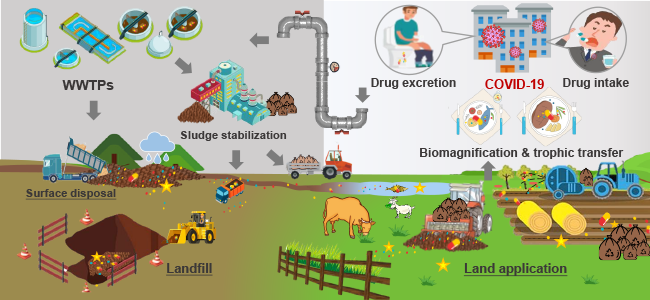
Tracing COVID-19 drugs in the environment: Are we focusing on the right environmental compartment? Environmental Pollution. https://doi.org/10.1016/j.envpol.2023.122732 (Published 13 October 2023; Submitted 20 July 2023) (JCR Q1, IF 8.9)
韩杰 完成闭环:新冠疫情后家庭过期药品管理的政策与技术框架

(Preprint version) Closing the loop: The imperative of managing unwanted and expired pharmaceuticals after the COVID-19 pandemic. Available from SSRN. https://papers.ssrn.com/sol3/papers.cfm?abstract_id=4020765 (Date Written: 25 January 2022) PDF download
(Published version) Barcoding drug information to recycle unwanted household pharmaceuticals: a review. Environmental Chemistry Letters. https://doi.org/10.1007/s10311-022-01420-1 (Published 27 April 2022; Submitted 31 January 2022) (JCR Q1, IF 15.7)
【作者注】医疗条件的改善和全球人口老龄化加剧了人们对药物的需求。COVID-19大流行期间人们大量购买、储存药物以及处方药的过剩,造成了大量excessive, expired和其它unwanted pharmaceuticals在家庭及用户手中累积。当前针对家庭waste pharmaceuticals的处置方法是将其收集起来后作为hazardous wastes集中焚烧。这一方法依赖于对家庭waste pharmaceuticals定期进行大规模collections。然而,这些take-back programs仅在少数国家和地区available, 在新冠lockdown期间亦无法正常实施,导致大量药物在用户手中闲置至过期。与此同时,持续的新冠疫情导致药物产能受限,加剧了一些药物的短缺。FDA报道药物在超期很长时间后(as long as 15 years)其活性成分(active pharmaceutical ingredients,APIs)仍保持完好。大多数化学合成药matrix简单且成分稳定。但迄今为止仍缺乏一项有效、可持续的闲置与过期药物管理策略。针对这些药物的分类回收与活性成分提取与再利用,是减少此类bioactive污染物向环境排放,同时解决药物及原料短缺,实现循环经济的有效方法。实现这一目标的难点在于回收药物的精分、API提取、quality check及商业可行性。本文提出一种新的unwanted药物回收利用策略,利用现有Internet与logistics infrastructure,由owners(而非集中回收处理facilities)对unwanted药物进行分类并在线提交信息,再由系统auto-generate free coded mailing labels,实现已使用药物与unopened药物、过期药物与non-expiring药物的separate collection。再利用现有物流网络将unopened药物mail in至集中的sorting facilities,利用machine-based sorting自动读取unopened药物上的codes,基于用户提供的信息,实现依据药物的有效成分、expiring date和药物形态(tablets, capsules, gels)的精分。完成分类后,可利用现有的化合物分离与提取技术,对药物集中进行API extraction 或return to manufactures for de-formulation and reuse, or re-distributing to other patients in need, closing the loop in managing the flow of pharmaceuticals.
陈博 等. 疫情下社区消毒加速滋生的微生物抗性及转移至人的风险

(Preprint version) Disinfectant- and antibiotic-resistance in community environments and risk of direct transfers to humans: Unintended consequences of community-wide surface disinfecting during COVID-19? Available at SSRN. http://dx.doi.org/10.2139/ssrn.3778406 (Date Written: 7 December 2020) PDF download
(Published version) Biocide-tolerance and antibiotic-resistance in community environments and risk of direct transfers to humans: Unintended consequences of community-wide surface disinfecting during COVID-19? Environmental Pollution. https://doi.org/10.1016/j.envpol.2021.117074 (Published 3 April 2021; Submitted 7 December 2020) (JCR Q1, IF 8.9)
【更新】On 29 January 2021, Nature published a Feature article (https://www.nature.com/articles/d41586-021-00251-4) where the author combed through existing evidence on fomite transmission of COVID-19 and raised questions over the cleaning and disinfection protocols that have been widely put in place in response to COVID-19. On the same day, two Australian scientists wrote a Letter to Science (https://science.sciencemag.org/content/371/6528/474.1.full) expressing concerns over the surging use of antimicrobials including disinfectants, sanitizers, and antiseptics during COVID-19, and warned on the potential of disinfectant-facilitated bacterial acquisition of antimicrobial resistance, a widely acknowledged environmental and public health risk. Our article, which was written on 7 December 2020 and currently under peer review, presents the first systematic view and in-depth analysis on this subject in the current literature context, by focusing on the chemical disinfecting agents currently approved for COVID-19 disinfection.
张雪 陈博 等. 疫情居家令期间对高钠食品的过量摄入导致的健康风险
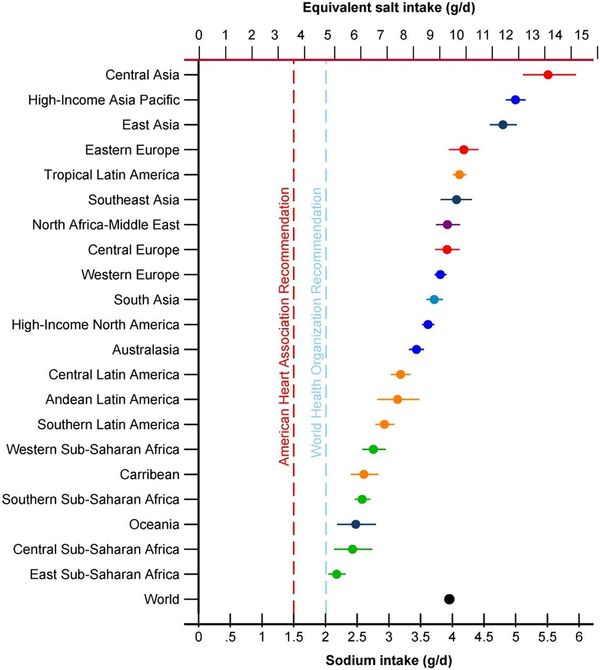
(Preprint version) Locked on salt? Excessive consumption of high-sodium foods during COVID-19 presents an underappreciated public health risk. Available from SSRN. http://dx.doi.org/10.2139/ssrn.3804495 (Date Written: 10 January 2021; First Revised: 26 March 2021; Last Revised: 27 April 2021) PDF download
(Published version) Locked on salt? Excessive consumption of high-sodium foods during COVID-19 presents an underappreciated public health risk. Environmental Chemistry Letters. https://doi.org/10.1007/s10311-021-01257-0 (Publishedd 1 June 2021; Submitted 28 April 2021) (JCR Q1, IF 15.7)
【更新】中国疾病预防控制中心主任、国家自然科学基金委员会副主任、中国科学院病原微生物与免疫学重点实验室主任、西安交通大学公共卫生学院博士生导师高福院士,在2021年5月30日中国科学院学部第七届学术年会全体院士学术报告的讲话中指出:与流行病防控、慢性病一样,减盐(注:减少盐、钠的膳食摄入),是我国疾控中心面临的一项长期任务。
孙世翼 等. 扔掉还是冲掉:疫情中发展中社区在厕纸丢弃方式上面临的两难

To bin or to flush: Toilet paper presents a dilemma for developing communities during the COVID-19 pandemic. Environmental Chemistry Letters. https://doi.org/10.1007/s10311-020-01064-z (Published 8 August 2020; Submitted 15 July 2020) (JCR Q1, IF 15.7)
Topic (4) Finding smarter cures, surveillance tools, disinfection and preventive strategies, for long-term covid or other infectious diseases
主题 (4) 更有效的治疗、监测、消毒与预防策略,应对长期新冠或其它流行病
王雪 等. 阳光下泊车:太阳光照升温作为车内新冠病毒的一种被动灭活方式

(Preprint version) Parking Under the Summer Sun: Solar Heating As a Strategy for Passively Disinfecting COVID-19 in Passenger Vehicles During Warm-Hot Weather Available at SSRN. https://dx.doi.org/10.2139/ssrn.3714072 (Date Written: October 15, 2020) PDF download
(Published version) Solar heating to inactivate thermal-sensitive pathogenic microorganisms in vehicles: Application to COVID-19. Environmental Chemistry Letters. https://doi.org/10.1007/s10311-020-01132-4 (Published 6 November 2020; Submitted: 15 October 2020) (JCR Q1, IF 15.7)
美国德特里克堡(Fort Detrick)生物实验室最近发表的一项follow-up study 中,引用并验证了本文的结论。作者用SARS-CoV-2真病毒,模拟阳光下车内密闭升温环境(气温54.5摄氏度、相对湿度20%、304不锈钢表面,3组重复),观察到新冠病毒在36分钟 (+/- 9分钟) 后,灭活率达到90%。
A follow-up study conducted at BNBI at Fort Detrick, United States, cited our findings and validated our conclusions in this paper. Authors used real SARS-CoV-2 isolates in their experiments simulating conditions in cabins of enclosed vehicles parked under direct sunlight after a short period of time (i.e., 54.5 deg C, relative humidity 20%, on 304 stainless steel surfaces, in triplicate). The authors observed a 90% decrease in virus infectivity after 36 min (+/- 9 min). The results aligned well with our recommendation (20-30 min) based on our field measurements and data drawn on the thermal stability of SARS-CoV-2 available then.
论文链接:Biryukov, J., Boydston, J.A., Dunning, R.A. et al. SARS-CoV-2 is rapidly inactivated at high temperature. Environ Chem Lett (2021). https://doi.org/10.1007/s10311-021-01187-x
代寒 等. 为全球人口接种新冠疫苗:用创新的方法与协作应对前所未有的挑战
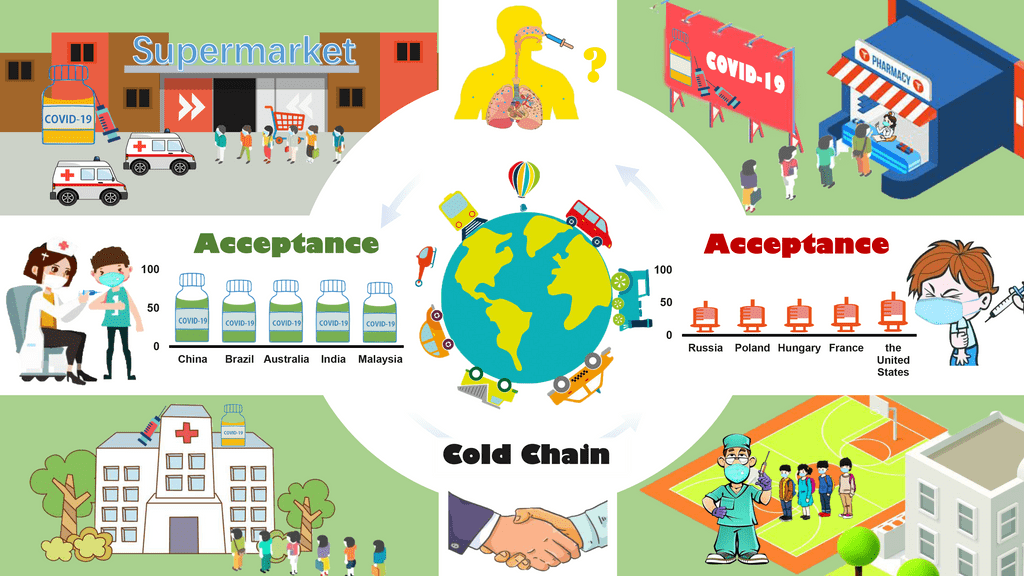
Who is running faster, the virus or the vaccine? (Vaccinating a global population for COVID-19: Unprecedented challenges call for innovative approaches and collaborative efforts) Environmental Chemistry Letters. https://doi.org/10.1007/s10311-020-01110-w (Published 15 October 2020) (JCR Q1, IF 15.7)
代寒 等. 跨越居家令、药物与疫苗:寻求一条应对人类新型病原体的更优途径
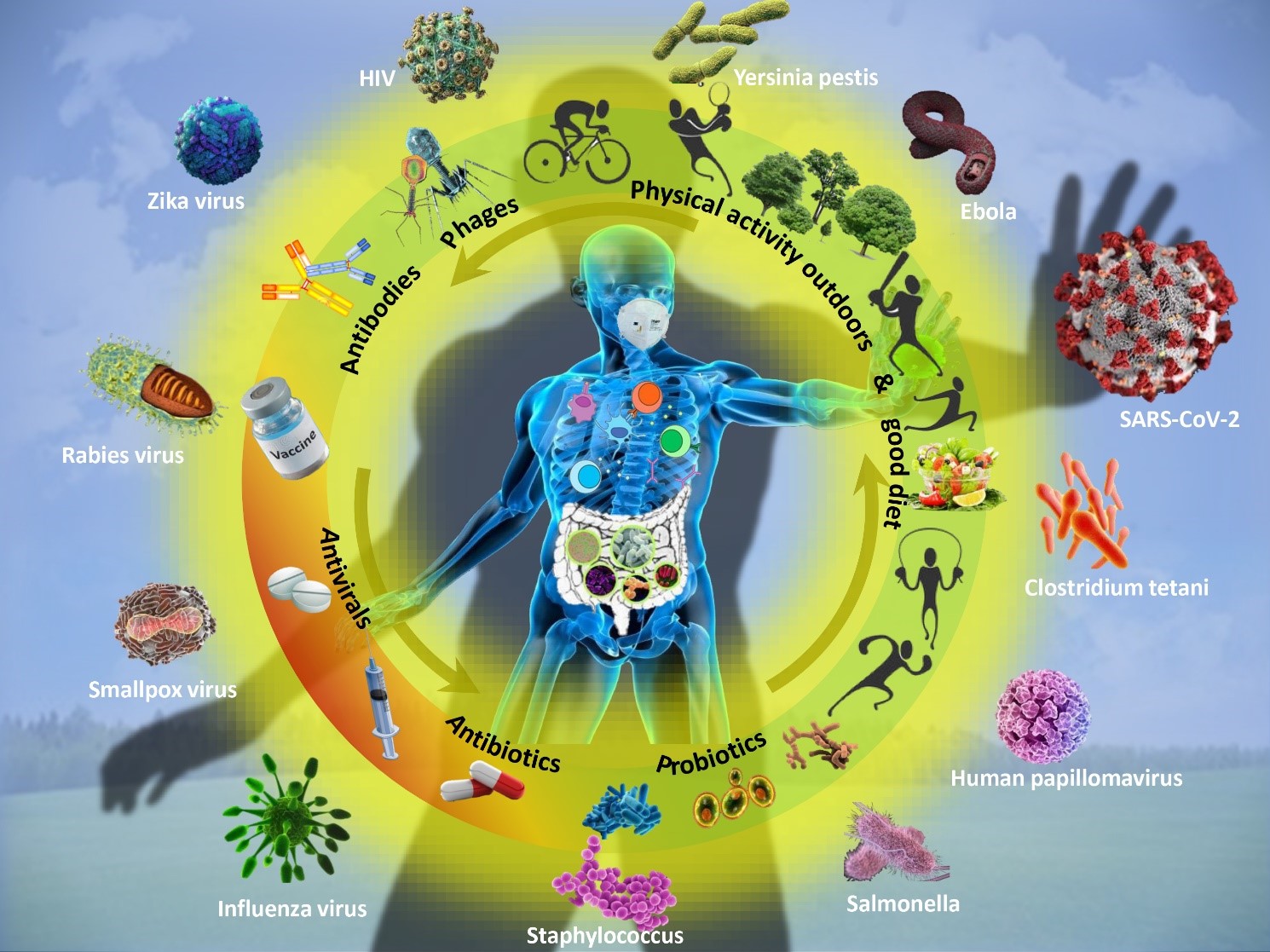
(Preprint version) Beyond lockdowns, drugs and vaccines: Is there a smarter path to prepare our communities for novel pathogens? Available at SSRN. http://dx.doi.org/10.2139/ssrn.3741331 (Date Written: November 19, 2020) PDF download
(Published version) Smarter cures to combat COVID-19 and future pathogens: a review. Environmental Chemistry Letters. https://doi.org/10.1007/s10311-021-01224-9 (Published 2 April 2021; Submitted 4 December 2020) (JCR Q1, IF 15.7)
王茜茜 韩杰 等. 社会组织方式而非病毒病原体是大流行产生的根本原因
Society organization, not pathogenic viruses, is the fundamental cause of pandemics Environmental Chemistry Letters. https://doi.org/10.1007/s10311-021-01346-0 (Published 30 October 2021) (JCR Q1, IF 15.7)
王超琦 等. 新冠疫情是否将终结于德尔塔与奥密克戎变体?
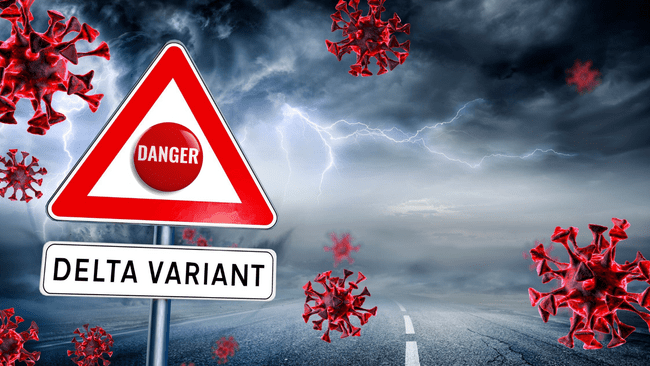
Will the COVID-19 pandemic end with the Delta and Omicron variants? Environmental Chemistry Letters. https://doi.org/10.1007/s10311-021-01369-7 (Published 15 January 2022) (JCR Q1, IF 15.7)